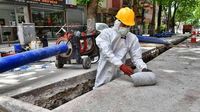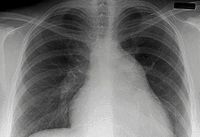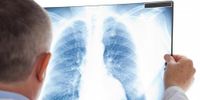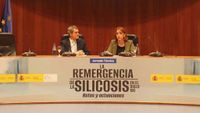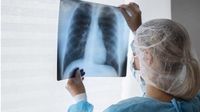In a troubling resurgence, silicosis, an incurable respiratory disease caused by inhaling crystalline silica, has become a significant health concern in Spain. A recent report from the Ministry of Health, titled 'La reemergencia de la silicosis en España,' reveals alarming statistics that highlight the increasing prevalence of this disease, traditionally associated with mining but now affecting various industrial sectors.
According to data from the Instituto Nacional de la Seguridad Social (INSS), from 2007 to 2024, Spain has reported a staggering 5,900 cases of silicosis, with 520 of those cases occurring in 2024 alone—the highest annual figure recorded to date. This sharp increase has prompted health authorities to reassess the risks associated with crystalline silica exposure, particularly in industries such as the manufacturing and handling of quartz and artificial stone, commonly used in kitchen and bathroom countertops.
Olga Sebastián, director of the Centro de Nuevas Tecnologías del Instituto Nacional de Seguridad y Salud en el Trabajo (INSST), emphasized the severity of the situation during the report's presentation on April 3, 2025. "Spain is one of the countries experiencing the most intense resurgence of silicosis in the 21st century," she stated, highlighting the need for urgent action.
The report indicates that nearly half of the silicosis cases (47.8%) are linked to the manufacturing and handling of quartz aggregates and the processing of natural stones like granite and slate. Other contributing sectors include construction, non-metallic mineral extraction, and metallurgy. These findings align with a broader trend observed in the last decade, where health agencies have begun to recognize that the impact of crystalline silica exposure extends beyond silicosis, potentially leading to lung cancer and other respiratory and cardiovascular diseases.
Since 2018, there have been 46 reported cases of lung cancer attributed to silica exposure, with 19 of those cases diagnosed in 2024. This alarming correlation underscores the urgent need for preventive measures and stricter regulations in industries where silica exposure is prevalent.
The report also reveals concerning demographic trends. There has been a notable increase in silicosis diagnoses among younger workers, particularly men under the age of 50. Data shows that from 2007 to 2019, over 50% of reported cases involved men aged 30 to 49. Catherine Cavalin, a researcher from the National Center for Scientific Research in France and co-author of the report, noted, "In the period of resurgence, we see that more than half of the cases reported among men are from those between 30 and 49 years old." This trend raises questions about workplace safety and the adequacy of current protective measures.
Silicosis can be categorized into several types based on the amount and duration of silica exposure. Chronic silicosis, the most common form, typically manifests after many years of exposure to low or moderate levels of silica dust. Accelerated silicosis can develop within 5 to 15 years of high exposure, while acute silicosis may occur within months of intense exposure. Diagnosing silicosis often involves a combination of occupational history, physical examination, pulmonary function tests, and imaging studies such as chest X-rays or high-resolution CT scans. In some cases, a lung biopsy may be necessary to confirm the diagnosis.
Currently, there is no cure for silicosis; treatment focuses on alleviating symptoms and preventing complications. This may include medications to manage symptoms, oxygen therapy for those with breathing difficulties, and, in severe cases, lung transplantation may be considered. Importantly, individuals diagnosed with silicosis must avoid any further exposure to silica dust.
The report highlights the critical role of prevention in combating silicosis. The University of Navarra emphasizes that preventive measures should include the use of personal protective equipment, such as respirators, and implementing engineering controls to reduce silica dust in the workplace. The Ministry of Health has called for continued research into silicosis and related occupational diseases, urging for a qualitative study to better understand the health and legal situations of those affected.
Additionally, the report suggests increasing surveillance and monitoring of the primary productive sectors responsible for the resurgence of silicosis in Spain. It also recommends considering a ban on quartz aggregates or implementing much stricter regulations for working with these materials, following the examples set by other countries like Australia and California.
Galicia has been identified as the autonomous community with the highest number of silicosis cases, accounting for 32.9% of reported instances, followed by Castilla y León (14%) and Andalusia (10.3%). Between 1990 and 2020, there were 4,418 deaths attributed to silicosis, highlighting the disease's deadly potential.
In light of these findings, the Ministry of Health is advocating for a coordinated public administration response to address the resurgence of silicosis in Spain. This includes ensuring adequate healthcare for affected workers and recognizing their rights. The report's recommendations aim to bolster worker safety and health, addressing a public health crisis that has evolved from a disease of the past into a contemporary threat.
As Spain grapples with the implications of this resurgence, the need for heightened awareness, preventive measures, and regulatory action has never been more critical. The ongoing reevaluation of silica exposure risks is essential to protect workers' health and prevent further cases of silicosis and associated diseases.
